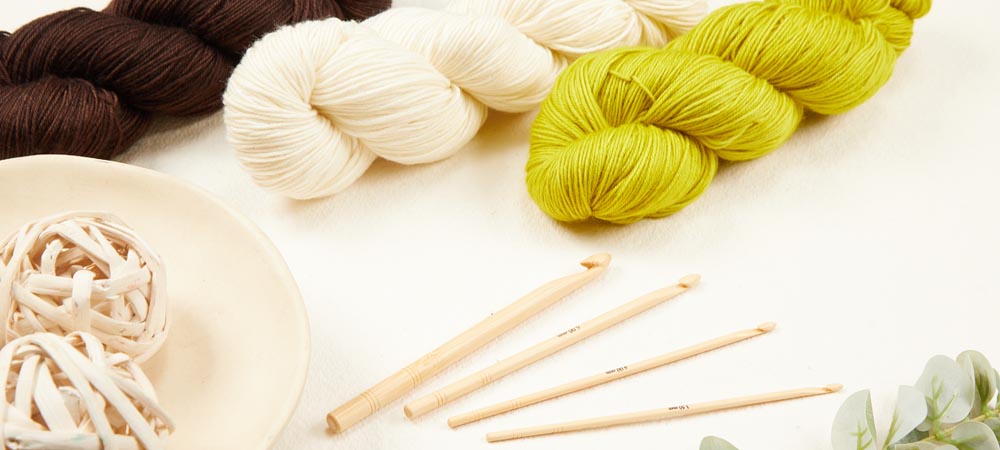One key consideration when creating a cozy and comforting blanket is the amount of yarn needed. Whether you prefer crochet yarn or knitting yarn, calculating the right amount for your project is crucial to ensure a snug and stylish blanket that will keep you warm and cozy all winter. The amount can vary depending on various factors. Let's dig in depth.
Factors Influencing the Need for Yarn
Calculating how much yarn a blanket will require takes more thought than just picking up a yarn skein and getting to work. Several factors determine the requirements.
The Blanket's Size
First things first, let's talk size! The size of your blanket is the most important factor in determining how much yarn you'll need. But let's be real: who wants to spend hours measuring and calculating when you could be busy being creative?
So, here's a little trick to help you estimate the yarn requirements: just measure the length and width of your blanket in inches or centimeters, and voilà! You'll have a rough estimate of the yarn you'll need.
But wait, there's more!
Are you using crochet yarn or knitting yarn? Do you prefer a lightweight yarn for a delicate blanket or a thicker yarn for a cozy and warm one? These factors can all affect the amount of yarn you'll need, so it's important to consider them when planning your project.
The dimensions of a blanket can also vary widely, so it's important to have a clear idea of the size you want before calculating.
- Queen-size blankets, commonly used for bedspreads and covers, are typically around 90" x 90" in size.
- Throw blankets are versatile and perfect for adding warmth and coziness to a space. They are often around 50" x 60" in size.
- On the other hand, compared to throw or queen-size blankets, baby blankets are typically manufactured with smaller and soft yarns. Although their dimensions might vary, they are generally smaller and easier to handle.
Yarn Weight
Yarns come in various weights, ranging from lace weight to super bulky. The weight of the yarn refers to its thickness and can impact the amount of yarn required. Here's what you need to know about yarn weight:
Understanding Yarn Weight Table: The Craft Yarn Council has developed a yarn weight table that assigns a number from 0 to 7 to different yarn weights. The table provides a general guideline for the thickness and yardage of each yarn weight.
Yarn Weight Guide: This guide provides information on the recommended hook or needle size, gauge, and yardage per weight for each yarn weight category. You can estimate how much yarn will be required based on the weight you plan to use.
Yarn Size and Yardage: Generally, lighter-weight yarns have more yardage per weight than heavier-weight yarns. For example, lace-weight yarn may have 400-600 yards per 100 grams, while super bulky yarn may have only 50-60 yards per 100 grams. Understanding the yardage per weight of your chosen yarn will help you calculate the total yardage needed for your blanket.
Crochet Stitch or Knitting Pattern
Now, let's talk stitches! The selection of the crochet stitch or knitting pattern can significantly influence it. Some stitch patterns require more yarn than others. For instance, a blanket with a simple stitch pattern can take less yarn than a complex pattern with lots of texture or detailed motifs.
It's also worth noting that the amount of yarn used can vary depending on the size of the stitches. Generally speaking, larger stitches require more yarn per inch than smaller ones. Therefore, using a stitch pattern with smaller stitches could be wise if you're trying to save yarn.
Individual Tension
When it comes to crocheting or knitting, each person has a unique way of working, known as individual tension.
Tight vs Loose Tension
Some individuals naturally crochet or knit tightly, meaning their stitches are compact and tightly packed. Conversely, some have a looser tension, resulting in more spacious and relaxed stitches.
You may use more yarn than someone with a looser tension if you have a tight tension. This is because tight stitches require more yarn to cover the same area as looser stitches. It's essential to know your tension and adjust your yarn estimates accordingly.
Here's a tip to tuck away: Don't be afraid to experiment!
Finding your ideal tension may take some trial and error. Experiment with different hook or needle sizes to achieve the desired tension for your project. Practice can also help you become more aware of your tension and adjust accordingly. Don't be discouraged if it takes a few tries to find your sweet spot - it's all part of the learning process.
So there you have it, folks – blankets are the ultimate comfort-seekers' dream come true! Blankets are a must-have whether you're snuggling up in bed, adding a pop of color to your living room, or creating a cozy little bundle of joy for your baby. Just remember, it's always better to have a little extra yarn on hand, just in case! Considering these aspects will help you avoid running out of yarn and create a beautiful and well-proportioned blanket that everyone will adore.


No comments yet